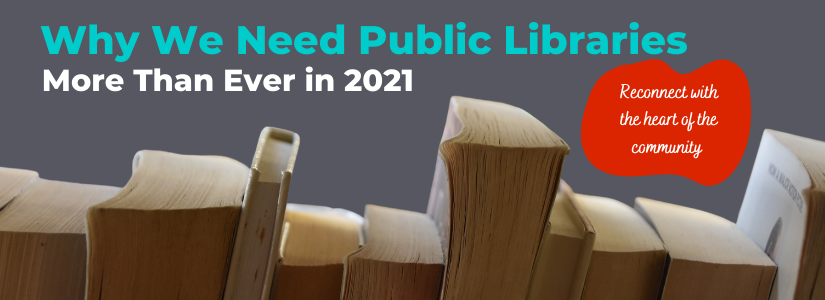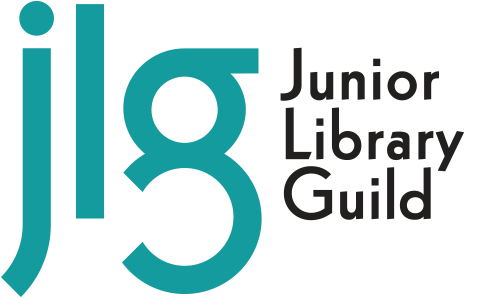Why we need public libraries (and their librarians) more than ever in 2021


If there is something we all can agree on, it’s that public libraries are the hub of our community. In the coming days, however, many parents of school-aged children may be hesitant to bring their children back to the public library. So here are the top 4 ways librarians can educate parents and their communities on the benefits that their public libraries can provide for them this coming school year.
1. Public Libraries Provide Supplemental Learning Resources that Schools May Not Offer
Free Tutoring
For starters, parents may not be aware that public libraries offer free tutoring resources to help children with their studies. Because many children have fallen behind over the past two years, students will be entering their classrooms this year with greater learning gaps than ever before. That being said, there is only so much a teacher can do to help each student, and this is where the local librarian has stepped in to provide those resources.
Many large public libraries (such as the NYPL-or we could highlight a public library that has a subscription service) have partnerships with tutoring services and offer free access to one-on-one online tutoring programs in core subjects, providing students much needed help with their homework that they can even access from home with a library card.
Supplemental Reading Resources and Remote Learning Support
Experts at their trade, public librarians also curate supplemental reading resources for children of all ages. From read-aloud suggestions to audiobooks, book recommendations and e-book recommendations (if your library needs a refresher to their online e-book catalogue, here’s a link to our online book package) the librarians ability to curate materials to excite and inspire young minds is a skill that they provide to the community, leading to lifelong literacy.
2. Librarians Help to Close the Literacy Gap
Closing the Gap through Resources
One of the biggest issues the pandemic has illuminated is how many students don’t have equal opportunities to study or access to resources. From lack of internet access to limited exposure to books, throughout the pandemic many children have had to put their education on the backburner, and many in turn have fallen behind, especially in their daily reading for literacy.
The public library, therefore, plays a pivotal role in closing those gaps. From high-speed internet and homework help to curated collections tailored to reluctant readers, public librarians have the know-how to guide children towards reading materials that will help build their confidence and literacy skills ( they may even have a subscription to our Librarian’s Favorite collection, with over 640 of the best books each year)
Fostering a Love of Reading
Other ways librarians build literacy? Librarians can provide services unique to the public library, such as the scaffolding necessary to help students get back on track with their reading, scheduling visiting author events and hosting online or in-person story times.
3.Public Libraries are an Extension of the School Library
More Comprehensive Collections
Ever since COVID-19 arrived and made some school libraries unavailable to browse, school librarians have had to think on their feet about how they can get reading materials to their students. Because of this, public libraries have become an extension of the school library and in many ways can provide resources for children that would otherwise not be provided, including a much more comprehensive set of books and equipment.
For example, many students don’t work out of a physical textbook anymore and depend on digital sources,which greatly affects the child with no internet service. For this public libraries can supplement by providing offline resources (like our non-fiction classroom support for middle school book reports collection).
Help with Online Educational Tools
Librarians can also help teach young students (and their parents or caretakers) about the ins and outs of using online educational tools and work one-on-one to encourage a love of reading in students with books curated to their specific needs and interests.
4. Libraries Lighten the Load for Parents and Caretakers
Learn Together, Play Together
Public libraries provide a space and a community where families can engage with each other in play. Many public libraries provide social outlets like yoga for toddlers, book clubs, new mother groups and items that can be borrowed like STEM kits, music, video game and movie rentals, as well as Maker Spaces.
Additionally, they enrich the community with equipment that most people do not have at home. The Kearney Public Library in Nebraska, for example, offers 3D printers, Adobe Creative Cloud software, VHS to digital converter and other fun machines that people can get creative with.
Finally if all else fails, librarians are also prepared to provide resources for families that they can do together at home, such as arts and crafts, board games, puzzles and science experiments.
Getting the Word Out
In conclusion, public libraries and their librarians are at the heart of community learning, and our communities need the library perhaps more than ever before. Whether it’s accessing reliable high-speed internet, getting after-school help with tutoring and reading resources or maybe to have some social interaction for the little ones who are not yet in school, libraries provide essential services to ensure that the needs of our communities are being met. So how can we encourage hesitant parents back into the library?
Librarians can make a big impact by informing the parents in the community through social media, emails and partnering with the local schools to get the information out there and share all of the resources that are available for them at the public library and invite them to stop in. Knowledge is power!
Here’s to a healthy and meaningful new school year, we appreciate each and every one of you.
For more resources this year, you can find our list of covid-19 resources and solutions guide here.
Sources
https://3dprint.com/233214/library-makerspaces-bring-tech-to-the-public/
https://www.kqed.org/mindshift/56378/how-libraries-stretch-their-capabilities-to-serve-kids-during-a-pandemic
https://www.understood.org/articles/en/9-free-public-library-resources-for-your-child-and-you




